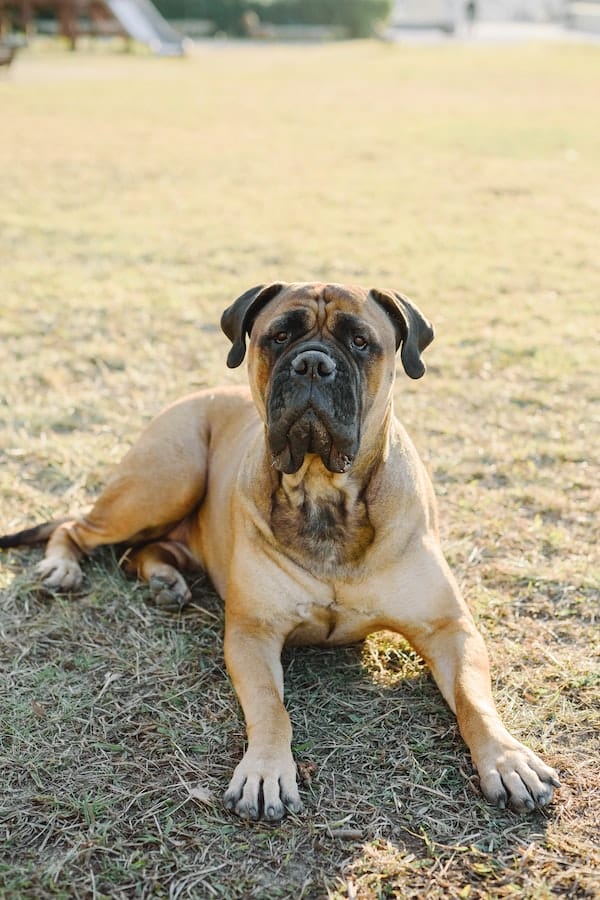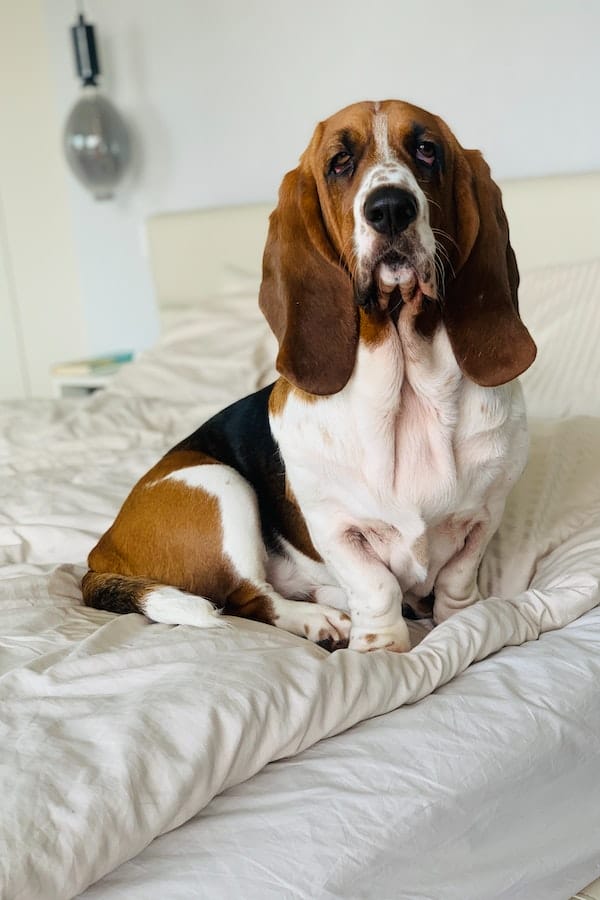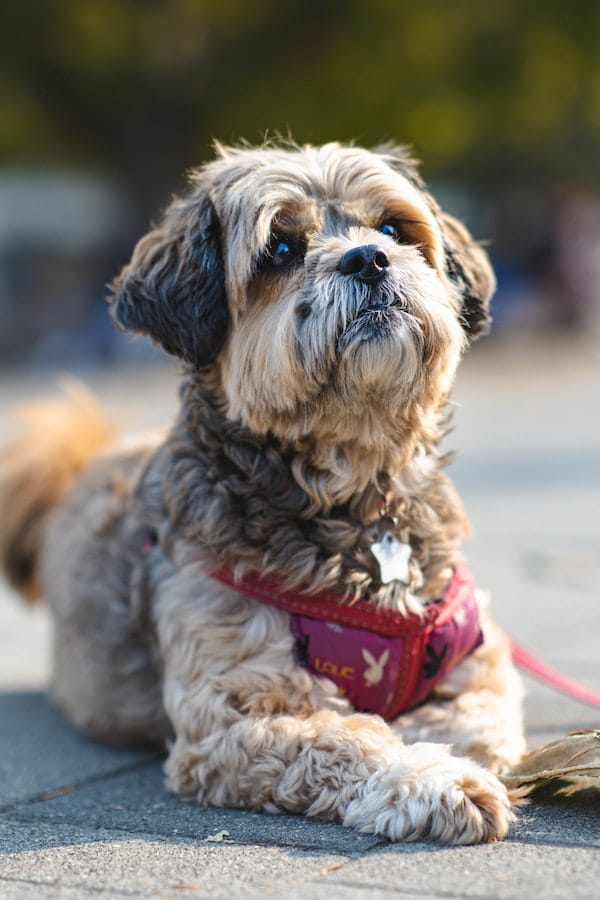
Hey, fellow canine enthusiasts!
Ever wished for a four-legged buddy to be by your side during those binge-watch sessions or lazy Sunday siestas, yet concerned about matching their boundless energy?
Well, worry no more.
I present you with the low exercise dogs, tailor-made for those who prefer the quieter side of life.
These doggos live and breathe the old saying, “It’s best to let sleeping dogs lie.” Isn’t that something?
Characteristics of Low-Energy Dog Breeds
Let’s explore the wonderful world of low-energy dog breeds and what makes them so endearing.
These breeds are often cherished for their laid-back and relaxed personalities, making them ideal companions for individuals or families who prefer a more leisurely lifestyle.
So, what are the characteristics that set these dogs apart?
Easy-going nature
Low-energy dog breeds are known for their easy-going disposition.
They are less likely to get excited or agitated over minor things.
Instead, they tend to approach life with a calm and composed demeanor. This makes them a calming presence in any household.
Restraint enthusiasm
While some dogs might bound around with boundless energy, low-energy breeds exhibit a more measured and reserved enthusiasm.
They may have moments of playfulness, but they are less likely to become overly hyper or demanding.
Fondness for cozy corners
These dogs often have a special affinity for cozy nooks and corners.
You’ll frequently find them curled up on a comfortable couch, nestled in a favorite blanket, or seeking out the sunniest spot in the house for a peaceful nap.
Their love for relaxation is endearing.
Low exercise needs
One of the defining characteristics of low-energy dog breeds is their minimal exercise requirements.
They don’t demand long, vigorous walks or hours of playtime to stay content. A leisurely stroll and some light play suffice to keep them happy and healthy.
Loyalty and affection
Even though low-energy dogs may not be the most exuberant bunch, their loyalty and affection are every bit as strong as their more energetic peers.
They establish profound connections with their owners and are renowned for their steadfast devotion.
While they might not bound around with boundless energy, they’ll stick right by your side, offering companionship and solace whenever you need it.

Factors that Contribute to Low Exercise Needs
Dogs can indeed be couch potatoes, and there are several intriguing factors that contribute to their low exercise needs.
It’s a bit like a puzzle, with each piece revealing more about why some dogs are perfectly content with minimal physical activity.
Let’s delve into the intricacies of this canine sedentary lifestyle.
Breed type
The breed of a dog is a substantial factor in determining their exercise needs.
Some breeds are naturally more energetic, thanks to their genetic heritage.
Sporting and herding breeds, for instance, are wired to be active and thrive on physical challenges.
On the other hand, toy and brachycephalic breeds often lean towards the more sedentary side. So, breed characteristics set the baseline for a dog’s activity level.
Age
Dogs are a lot like us, you know? Their zest for activity ebbs and flows with age.
Remember those energetic puppy days? Well, as dogs mature, they chill out a bit.
And our senior furry pals, need less exercise, thanks to lower energy levels and a slower pace of life.
Sometimes, age-related stuff like arthritis can also affect their ability to be on the move.
Health condition
A dog’s wellness is a big part of how much exercise they need.
For instance, a pup dealing with some serious health hurdles, such as cardiac issues or maybe some breathing challenges, might not be up for intense exercise sessions.
This would obviously dial down their need for workout time.
Environmental factors
Ever thought about how a dog’s living conditions could influence their exercise needs?
If a dog’s home is a compact city apartment with not much space to dash around, they won’t be getting the same workout as a country pup who has wide, open fields to sprint across.
Owner’s lifestyle
What about the person at the other end of the leash?
A dog owner’s lifestyle matters too!
If the owner prefers a quiet, relaxed routine or is short on time, their dog may adapt to this calmer, less active rhythm of life.

Benefits of Low Exercise Dogs
Low-exercise dogs come with a multitude of benefits that can be a perfect match for specific lifestyles and circumstances.
These pups bring a unique charm and a sense of ease to the lives of their owners.
Ideal for laid-back lifestyles
One of the standout advantages of low exercise dogs is that they are tailor-made for people with laid-back lifestyles.
If you’re someone who enjoys quiet evenings, leisurely weekends, or perhaps a good book on the couch, a low-energy dog is your perfect companion.
They won’t demand vigorous play sessions, allowing you to enjoy a more peaceful and relaxed atmosphere at home.
Elderly companionship
For elderly individuals, low exercise dogs are a blessing.
Aging individuals may not have the energy or mobility for strenuous activities.
Low-energy dogs, with their calm and easy-going nature, provide much-needed companionship without requiring their owners to keep up with an energetic pup.
Their loyalty and affection offer a source of comfort and connection for older individuals.
Easy to manage
Managing a low exercise dog is notably more straightforward.
They don’t require hours of exercise every day, which can be a blessing for busy individuals or families with tight schedules.
This makes them a practical choice for people who can’t dedicate substantial time to physical activities but still want the companionship and joy that a dog brings.
Apartment living
In urban areas with limited outdoor space, apartment living is the norm.
Low exercise dogs adapt wonderfully to apartment life.
Their lower energy levels mean that they don’t feel cooped up or frustrated by the lack of a yard.
Short walks and some indoor playtime suffice to keep them content, making them a perfect fit for city dwellers.
Less destructive behavior
High-energy dogs, if not adequately exercised, can sometimes resort to destructive behavior as an outlet for their excess energy.
Low-energy dogs, on the other hand, are less likely to engage in such behavior.
They’re content with a quiet corner and a cozy bed, making them less likely to chew furniture or dig up your garden.

Challenges of Low Exercise Dogs
While low exercise dogs have their many charms, there are some challenges that come with their sedentary lifestyle.
It’s important to be aware of these potential issues and take steps to ensure that your beloved low-energy pup remains happy and healthy.
Obesity risk
One of the most significant challenges faced by low exercise dogs is the risk of obesity.
Their lower activity levels mean they burn fewer calories, so it’s essential to monitor their diet closely.
Without proper portion control and a balanced diet, they can easily put on extra weight, which can lead to a host of health problems like joint issues and heart disease.
Boredom-related behavior
Low exercise dogs, like any other, can get bored.
When they don’t have enough mental and physical stimulation, they might resort to problematic behaviors to relieve their restlessness.
Chewing on furniture, excessive barking, or digging up the garden can become coping mechanisms for their boredom.
It’s crucial to provide them with appropriate mental and physical challenges to prevent this.
Socialization challenges
Dogs need socialization to be well-adjusted and confident.
Low exercise dogs, if not properly socialized, can become anxious or nervous in new situations or around other dogs.
It’s important to expose them to various environments, people, and other animals to ensure they grow up to be well-rounded companions.
Health issues
Low exercise dogs can be more prone to certain health issues due to their sedentary lifestyle.
This includes problems like muscle atrophy, joint stiffness, and decreased cardiovascular health.
Regular check-ups with a veterinarian are essential to monitor their overall well-being and catch any health concerns early.
Stimulation needs
Even though low exercise dogs require less physical activity, they still need mental stimulation.
Puzzle toys, interactive games, and training exercises can help keep their minds engaged and prevent them from getting bored or restless.
Balancing exercise
The key to keeping low exercise dogs happy and healthy is finding the right balance.
While they don’t need hours of daily exercise, they do still require some physical activity.
Short walks, gentle playtime, or low-impact activities like swimming can help maintain their physical health.

Top Low Exercise Dog Breeds
When it comes to low exercise dog breeds, there are some all-stars that shine brightly in the easy-going category.
These breeds, despite their calm demeanor, possess a wealth of charm and unique qualities that make them beloved companions for those who prefer a more relaxed lifestyle.
Let’s meet these top contenders:
Shih Tzu
The Shih Tzu is a small breed with a big personality. They are known for their luxurious, long, and flowing coat, but don’t be fooled by their appearance.
Shih Tzus are content with short walks and indoor play, making them a perfect choice for apartment living and those who prefer less strenuous activities.
Bulldog
Bulldogs may have a stocky and muscular appearance, but they are far from being high-energy dogs.
Their laid-back nature and wrinkled face charm make them excellent companions for families, seniors, and anyone who enjoys a slow pace.
They may enjoy a bit of play but are quick to find a comfy spot to relax.
Basset Hound
Basset Hounds are known for their long ears and droopy expressions.
Their scent hound heritage means they have a strong nose, but they are not particularly active.
They are quite content with leisurely strolls and are famous for their affectionate and gentle disposition.
Bullmastiff
The Bullmastiff is a gentle giant with a calm and reserved temperament.
They are protective and loyal, making them wonderful family pets.
Despite their size, they have relatively low exercise needs and prefer to be by your side rather than engaging in high-energy activities.
Cavalier King Charles Spaniel
These elegant little dogs are known for their graceful appearance and affectionate nature.
They are perfectly suited for families and individuals who prefer a quiet and cozy home life. A short walk and some playtime are usually enough to keep them content.

Tips for Caring for Low Exercise Dogs
While they may not require the same level of physical activity as high-energy breeds, they still need attention and care. Here are some tips to keep your easy-going pup in tip-top shape:
Regular short walks
Even if your dog isn’t the jogging type, regular short walks are essential to maintain their overall health.
Aim for a couple of walks a day, and make them enjoyable by letting your dog explore at their own pace.
Short strolls help keep their joints limber and prevent weight gain.
Interactive play
Low exercise dogs may not be into intense games of fetch, but they do enjoy a bit of interactive play.
Toys like puzzle feeders, treat-dispensing toys, and gentle tug-of-war games provide mental and physical stimulation.
These activities keep their minds sharp and provide a dose of fun.
Watch their diet
Controlling weight is super critical for our low exercise fur-buddies.
Keep an eye on their chow habits and size up their portion control to fend off any extra pounds.
Why not loop in your vet to help choose the right grub and servings for your pup’s specific needs? A diet that hits all the right notes can keep them trim and terrific.
Regular vet check-ups
Don’t skimp on those regular visits to the vet.
These check-ups give the doctor a chance to keep tabs on your pup’s health and nip any potential problems in the bud.
Your vet is your go-to guru for all things health-related, be it advice on dental care, keeping up with vaccines, or tackling those age-related aches and pains.
Mental stimulation
In addition to physical activity, mental stimulation is important.
Low exercise dogs can get bored, which may lead to unwanted behaviors.
Puzzle toys and training sessions can keep their minds engaged and prevent restlessness. Teaching new tricks or commands is a great way to stimulate their intellect.
Grooming
Some low exercise breeds have specific grooming needs due to their coat type.
Regular grooming and brushing are essential to keep their coats healthy and free from matting. This grooming time can also serve as a bonding experience between you and your dog.
Conclusion
Wrapping it up, our low-exercise furry friends might not be supercharged with energy all the time, but that doesn’t mean they’re any less profound.
They come brimming with love and companionship, making them the perfect fit for those who find beauty in tranquillity and a slow-paced rhythm of life.
It’s interesting, isn’t it?
The quiet ones often surprise us the most – making significant splashes in their own gentle ways.
After all, as the saying goes, “Still waters run deep,” right?
FAQs
Absolutely! Their low activity levels make them perfect for apartment living.
Yes, they certainly can be. However, their ability to keep up with energetic kids might be limited.
Yes, even low exercise dogs benefit from short, regular walks for their physical and mental well-being.


GIPHY App Key not set. Please check settings